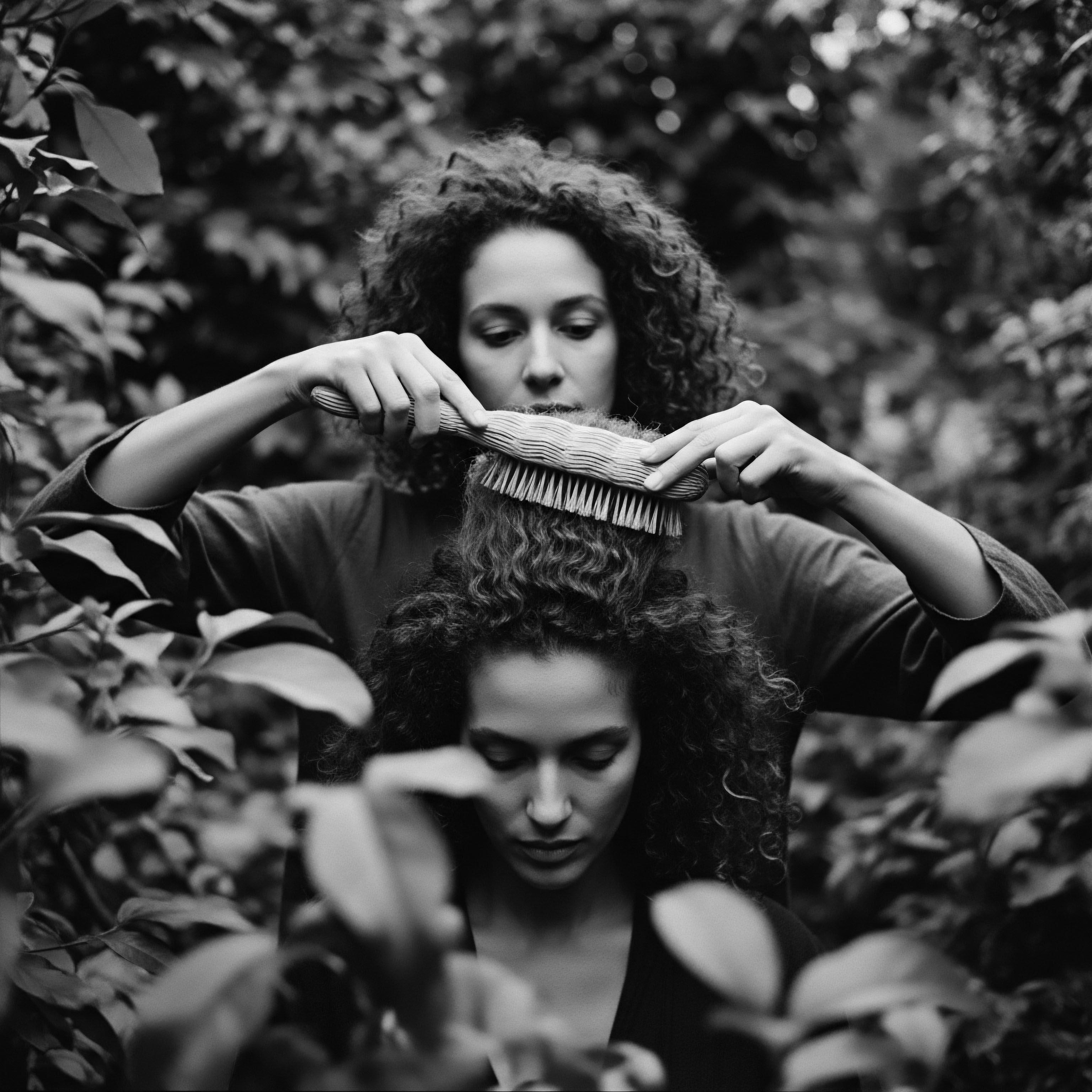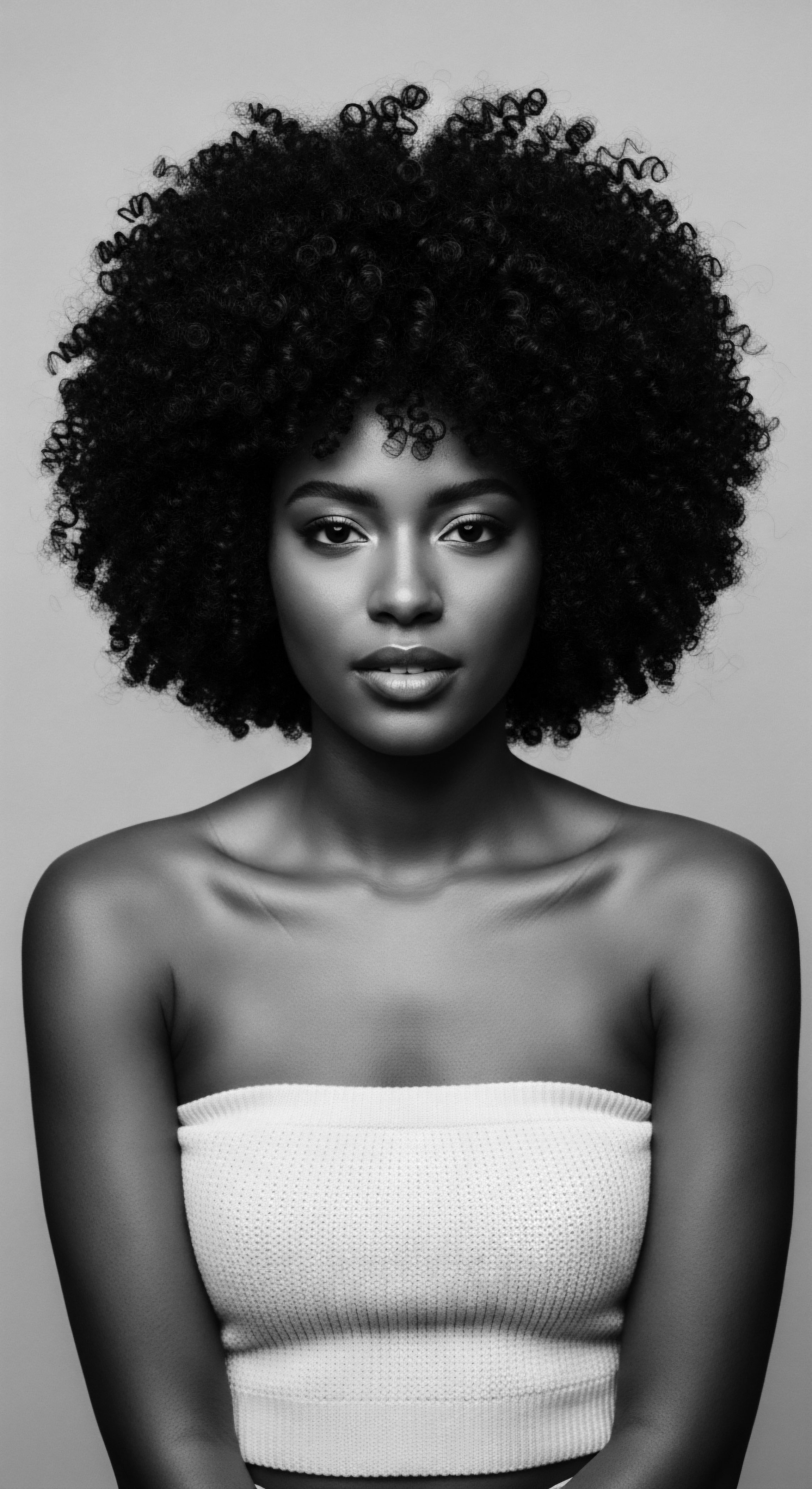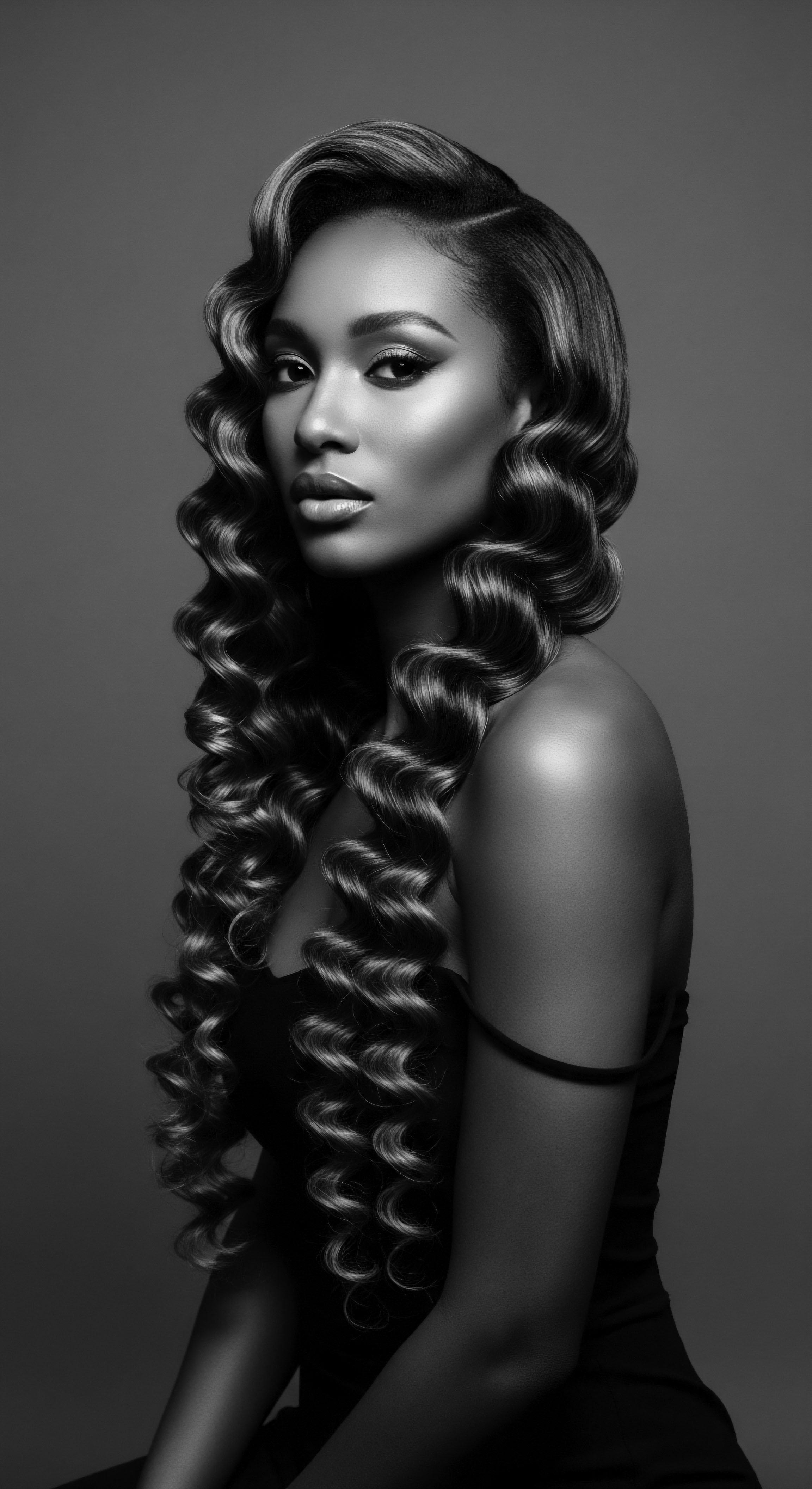
What oils benefit textured hair?
Ancestral oils like shea butter, castor, baobab, and marula deeply benefit textured hair, rooted in centuries of Black care heritage.

What historical hair care practices used natural oils for textured hair?
Historical hair care for textured strands employed natural oils like castor, moringa, and shea for hydration and cultural rituals.

What scientific principles confirm the long-held beliefs about oil effectiveness on textured hair heritage?
Scientific principles validate ancient beliefs about oil effectiveness on textured hair by explaining moisture retention and cuticle protection.

Can ancient hair oiling traditions benefit modern textured hair?
Ancient oiling traditions, rooted in heritage, offer tangible moisture and strength benefits for modern textured hair.

What scientific principles confirm the benefits of heritage hair oils?
Heritage hair oils protect and nourish textured strands by forming lipid barriers, reducing moisture loss, and supporting scalp health, validating ancestral wisdom.

Which oils seal moisture in textured hair?
Oils like shea butter, coconut, jojoba, argan, and castor seal moisture in textured hair, rooted in ancestral practices of protection and nourishment.

What specific oils were used in traditional hair care heritage?
Traditional hair care heritage primarily used plant-based oils like shea, coconut, castor, and olive for textured hair's unique needs.

Can modern science explain traditional oil benefits for textured coils?
Modern science confirms traditional oil benefits for textured coils by revealing molecular actions that validate centuries of ancestral hair care wisdom.

Which traditional oils are best for retaining textured hair moisture?
Traditional oils like shea butter, coconut, castor, and olive oils are best for retaining textured hair moisture, echoing centuries of ancestral wisdom.

What scientific principles confirm historical oil usage for textured hair?
Oils used historically on textured hair leverage principles of lipid barrier formation and protein interaction, confirming ancestral wisdom.

How does hair oil protect textured coils?
Hair oils protect textured coils by creating a hydrophobic barrier that seals in moisture, a practice echoing ancestral heritage of care and resilience.

How did ancestral oils care for textured hair?
Ancestral oils provided textured hair profound moisture, strength, and protection, connecting deeply to heritage and community care.

Do ancient oils work for textured hair?
Ancient oils, integral to textured hair heritage, offer deep conditioning and protection, a wisdom validated by both historical use and contemporary science.

Can historical oil applications scientifically benefit textured hair today?
Historical oil applications, rooted in textured hair heritage, offer scientific benefits by enhancing moisture and promoting scalp vitality.

What is oil’s impact on textured hair flexibility?
Oils enhance textured hair flexibility by deeply moisturizing strands and smoothing the cuticle, a practice rooted in heritage.

Can ancient oil practices benefit contemporary textured hair routines?
Ancient oil practices offer profound benefits to textured hair by deeply moisturizing and protecting, grounded in centuries of ancestral wisdom.

What scientific principles validate traditional hair oiling for textured hair?
Ancestral hair oiling for textured hair is scientifically validated by oils' ability to penetrate, seal, and nourish strands, preserving heritage.

Can ancient oil benefits for textured hair be explained by modern scientific understanding?
Ancient oil benefits for textured hair are scientifically explainable through lipid science, mechanical protection, and historical practices.

Which ancestral oils offer sun protection for textured hair?
Ancestral oils, like shea butter and coconut oil, provided sun protection for textured hair through natural barriers and compounds, a heritage of elemental care.

What scientific principles confirm the traditional benefits of oiling textured hair?
Oiling nourishes textured hair by reducing friction and sealing moisture, a benefit rooted in ancestral care practices.

What biological features make textured hair need oils?
Textured hair’s unique coiling, elevated cuticles, and natural oil distribution challenges necessitate oils, honoring ancestral care wisdom.

What scientific properties make traditional oils beneficial for textured hair?
Traditional oils offer scientific benefits for textured hair through unique fatty acid profiles and penetrating properties, validating ancestral practices.

Can heritage oils strengthen coils?
Heritage oils fortify coils by providing essential lipids and cultural continuity, deeply rooted in textured hair heritage.

Can modern science validate the effectiveness of heritage oiling methods?
Modern science affirms heritage oiling methods by showing their efficacy in hydrating, protecting, and strengthening textured hair, echoing ancestral wisdom.

How did ancient practices preserve textured hair with oils?
Ancient practices preserved textured hair with natural oils by deeply nourishing strands, providing environmental protection, and honoring cultural heritage.

Which ancient oils shaped textured hair heritage?
Ancient oils such as castor, coconut, argan, and shea butter profoundly shaped textured hair heritage, rooted in ancestral care practices.

